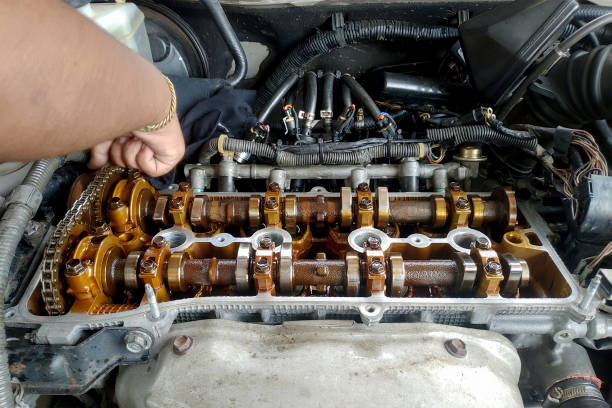When your trusty machine begins to show signs of poor performance, difficult starting, backfiring, or a noisy valve train, it’s often a clear indicator that it’s time for a valve adjustment. Valves play a critical role in the operation of your engine, and ensuring they are properly adjusted is essential for maintaining peak performance and preventing potential damage. In this article, we’ll delve into the importance of valve adjustments, the signs that your engine may need one, and how this maintenance task can keep your engine running smoothly.
Why Valve Adjustment Matters
The Role of Valves in Your Engine
To understand the significance of valve adjustments, it’s important to grasp the fundamental role valves play in your engine’s operation. Valves are integral components that control the flow of air and fuel into and out of the combustion chamber. They open and close with precise timing, allowing the engine to intake air and fuel during the intake stroke, compress the mixture during the compression stroke, ignite it during the power stroke, and expel exhaust gases during the exhaust stroke.
This precise timing is crucial for the engine to run efficiently and generate power. Valves need to open and close at the right moment in coordination with the piston’s movement, which is facilitated by the timing chain and various components. When the valves are correctly adjusted, this synchronization ensures optimal engine performance.
The Consequences of Valve Misalignment
When valves are out of adjustment, the engine’s operation can suffer in several ways:
- Poor Performance: Misaligned valves can lead to reduced engine power and efficiency. This results in sluggish acceleration, decreased fuel economy, and an overall decrease in performance.
- Hard Starting: If the intake valve timing is off, it can make starting the engine more difficult. This is because the air-fuel mixture may not be in the right proportion for ignition.
- Backfiring: Valves that do not close properly can allow unburned fuel to escape into the exhaust system. When this fuel ignites, it can result in backfiring, which not only sounds unpleasant but can also cause damage to the exhaust system.
- Noisy Valve Train: One of the most common signs of valve misalignment is a noisy valve train. This noise is often described as a ticking or tapping sound and can be indicative of valves that are not opening and closing as they should.
In summary, valve misalignment can have a cascading effect on your engine’s performance and overall health. It can lead to reduced power, poor fuel efficiency, starting issues, and potentially expensive damage if left unaddressed.
The Valve Adjustment Process
Performing a valve adjustment is a precise task that requires mechanical skill and attention to detail. Here’s a basic overview of the process:
- Accessing the Valves: The first step is to gain access to the engine’s valve cover. This may involve removing other components, such as the air filter housing or intake manifold, depending on your vehicle’s design.
- Finding Top Dead Center (TDC): To adjust the valves, you need to locate the piston at top dead center (TDC) for the specific cylinder you’re working on. This ensures that the valve you’re adjusting is in the closed position.
- Measuring Valve Clearance: Using feeler gauges, you’ll measure the clearance between the valve and the camshaft or rocker arm. This clearance varies depending on your engine’s specifications.
- Making Adjustments: If the clearance is not within the specified range, adjustments are made. This typically involves loosening the lock nut and turning the adjustment screw to achieve the correct clearance.
- Reassembly: Once all valves are adjusted to the proper clearance, you’ll reassemble any components you removed to access the valve cover.
- Testing: After adjustment and reassembly, it’s essential to start the engine and listen for any abnormal noises. This ensures that the valves are now operating correctly.
Conclusion
A valve adjustment may seem like a small maintenance task, but it plays a pivotal role in keeping your engine running smoothly and efficiently. Neglecting this important task can lead to a range of performance issues, from poor acceleration to backfiring, and even potential engine damage.
Regularly checking and adjusting your valves, as recommended in your vehicle’s maintenance schedule, can help ensure that your engine continues to perform at its best. If you notice any of the symptoms mentioned earlier or if it’s been a while since your last valve adjustment, it’s a good idea to schedule this maintenance task with a qualified mechanic. By doing so, you’ll not only extend the life of your engine but also enjoy a smoother and more reliable driving experience.
